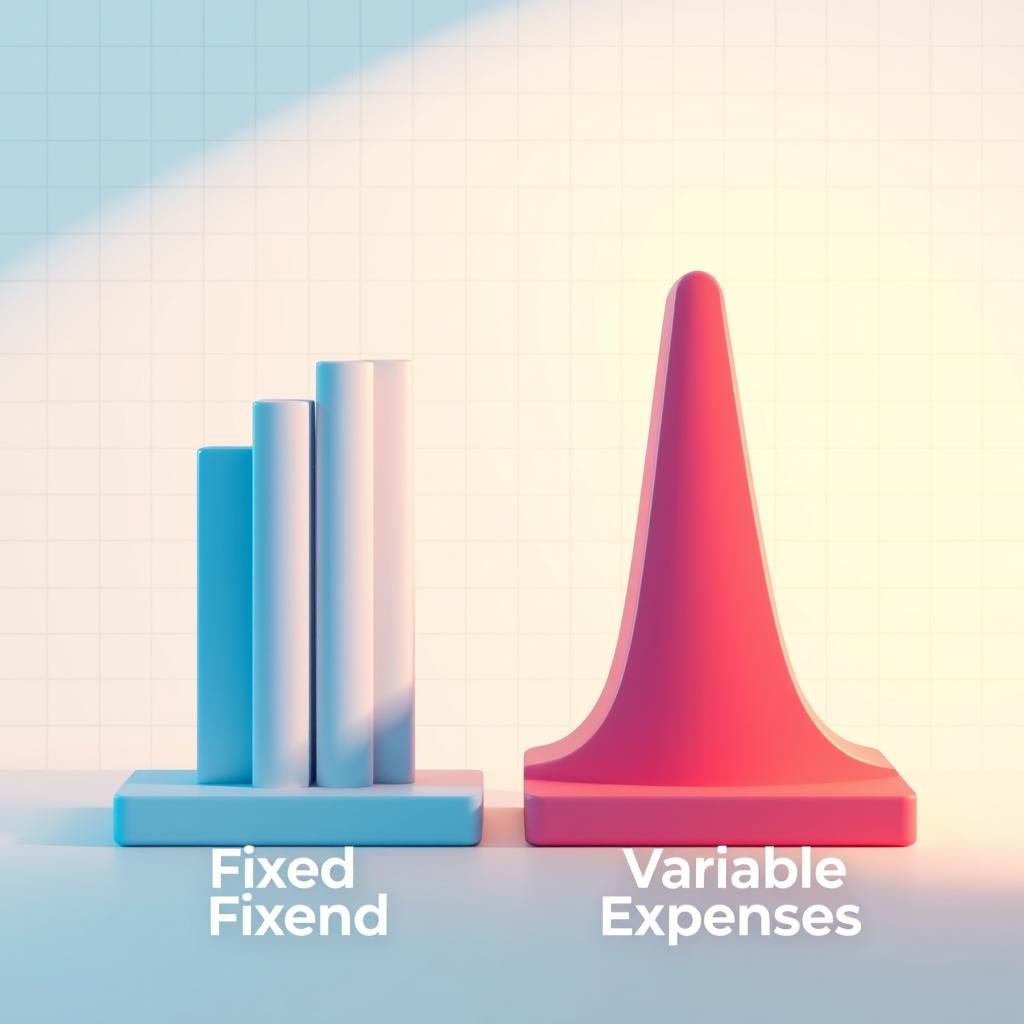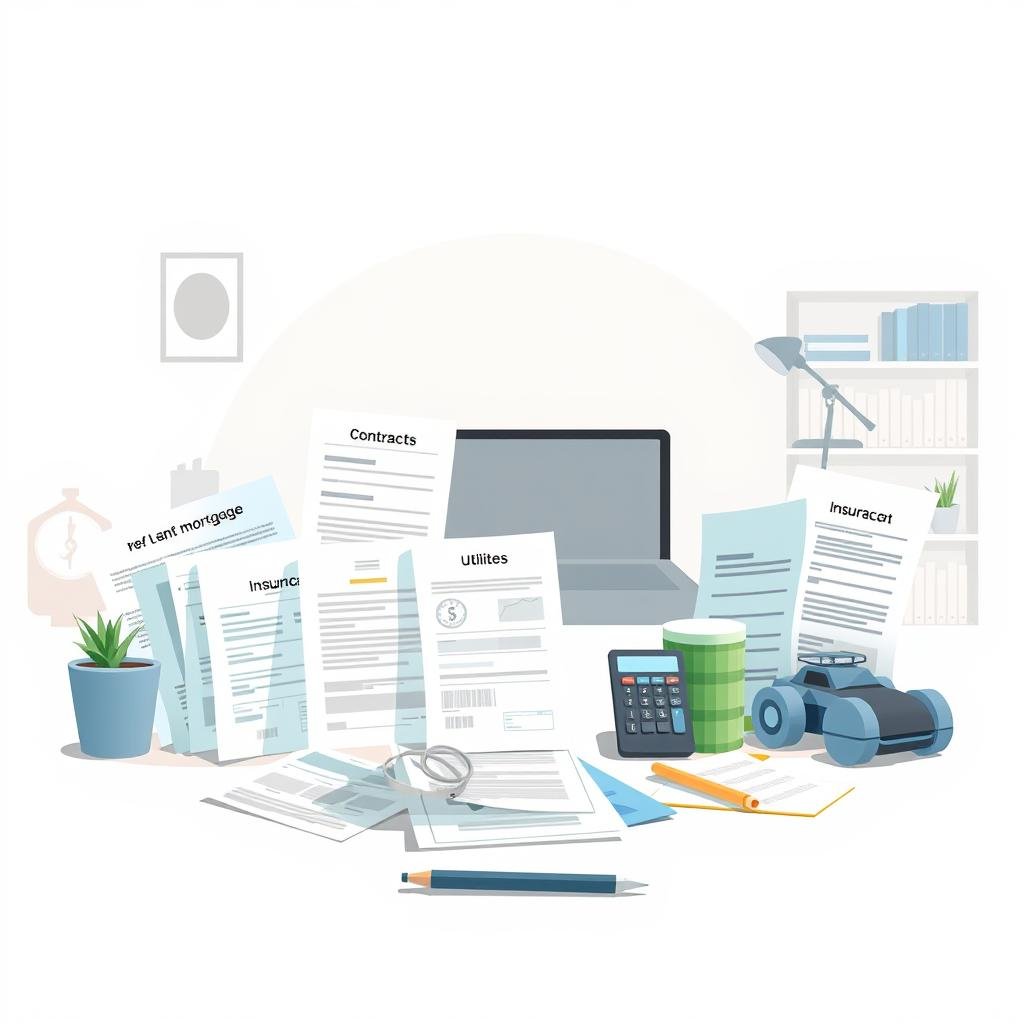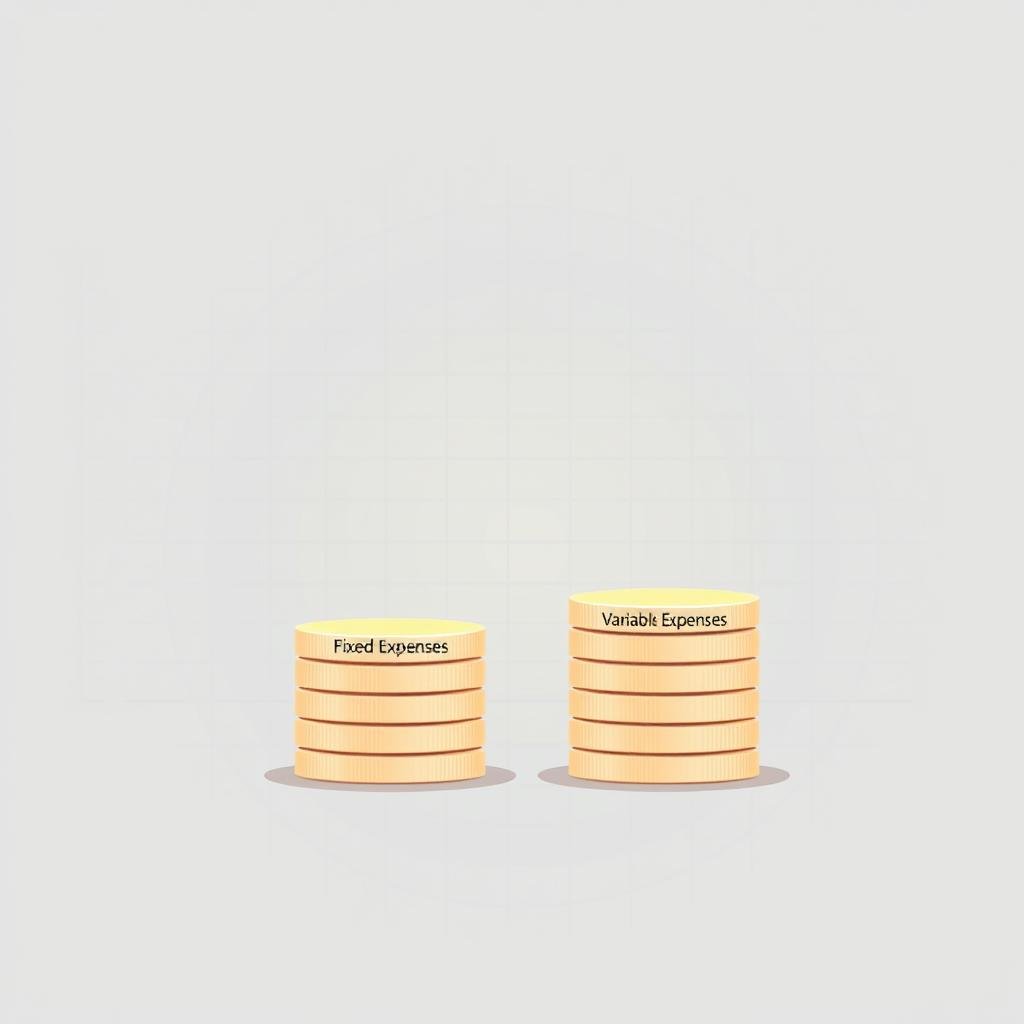
Understanding Fixed vs. Variable Expenses: A Beginner’s Guide
Posted in :
Managing your money well is a skill you can learn. Knowing the difference between certain costs is key. It can really help your financial health.
At first, I found it hard to sort out my monthly spending. But learning the difference helped me make better choices with my money. This guide aims to help you understand this important concept too.
By the end of this article, you’ll know how to tell fixed from variable expenses. This knowledge will help you plan your finances better. Let’s start on the path to better money management.
The Money Game: Understanding Your Cash Flow
Getting a handle on your cash flow is key to controlling your financial future. It’s about knowing where money comes in and goes out. This knowledge is vital for making smart financial choices.
Where Does All Your Money Go?
Tracking your expenses is crucial to see where your money goes. Most people know their income but struggle to track every dollar spent. By watching your spending, you can find ways to save and spend better.
Let’s say you make $4,000 a month. You might think you know how you spend it. But small, frequent buys can quickly add up.
| Category | Monthly Spend | Percentage of Income |
|---|---|---|
| Rent | $1,500 | 37.5% |
| Groceries | $500 | 12.5% |
| Entertainment | $300 | 7.5% |
Why Sorting Your Expenses Is a Game-Changer
Sorting your expenses into fixed and variable categories can change your financial health. Fixed costs stay the same, while variable costs change. Knowing this helps you manage your money better.
For example, knowing your rent is fixed helps you budget. But seeing dining out as variable helps you cut back.
Fixed vs. Variable Expenses: What’s the Real Deal?
Understanding the difference between fixed and variable expenses is key to managing your money. Knowing how these expenses affect your budget is crucial.
Fixed Expenses: Your Financial Anchors
Fixed expenses stay the same every month. They are predictable and often can’t be changed without big lifestyle shifts.
Examples of fixed expenses include:
- Rent or mortgage payments
- Car loan or lease payments
- Insurance premiums
- Minimum credit card payments
- Subscription services like Netflix or gym memberships
These expenses are like anchors for your budget. Knowing them helps you plan better and make smart money choices.

Variable Expenses: The Spending Rollercoaster
Variable expenses change a lot from month to month. You can control them more, adjusting based on your budget.
Examples of variable expenses include:
- Groceries
- Entertainment, such as dining out or movie nights
- Travel expenses
- Clothing and accessories
- Hobbies and recreational activities
Managing variable expenses can be tough because they change a lot. But tracking them helps you find ways to save and spend better.
By knowing the difference between fixed and variable expenses, you can see your financial situation more clearly. This helps you make better money choices.
31 Ways To Supplement My Income
Meet Your Fixed Expenses: The Usual Suspects
Knowing your fixed expenses is key to budgeting. These costs stay the same each month, making them easier to plan for. It’s vital to manage these expenses well to keep your finances stable.
Home Sweet Home: Housing Costs
Housing costs are often your biggest fixed expense. This includes rent or mortgage, property taxes, and insurance. For many, these costs take up a big part of their income. It’s important to check if these costs are affordable in the long run.
- Mortgage or rent payments
- Property taxes
- Homeowners insurance
Protection Plans: Insurance and Warranties
Insurance and warranties are also fixed expenses. They include health, auto, home warranties, and life insurance. They offer protection against unexpected costs that could harm your finances.

The Subscription Economy: Monthly Memberships
Today, many households have subscription services. These can be streaming services, software, gym memberships, or magazines. While each one might not cost much, they can add up and become a big expense.
Key subscription services to review:
- Streaming services (Netflix, Hulu, etc.)
- Software subscriptions (Microsoft Office, Adobe Creative Cloud, etc.)
- Gym memberships
Variable Expenses: Where Your Money Likes to Hide
Variable expenses are like the tricksters of your budget. They change shape and size without warning. Unlike fixed costs, which stay the same, variable expenses can swing wildly. This unpredictability makes them hard to handle, but knowing their tricks is the first step to financial control.

Grocery Cart Surprises
Grocery shopping is a big variable expense. The cost can jump up or down based on what you buy, sales, and where you shop. To keep grocery costs down, plan meals, use coupons, and buy in bulk. Ask yourself, “Are there any loyalty programs or apps that can help me save on groceries?”
Fun Money: Entertainment and Social Spending
Entertainment and social activities also add up to variable expenses. Whether it’s eating out, going to events, or traveling, these costs can change a lot. To control these expenses, set a budget for fun and choose activities that give you the most bang for your buck. Think, “Can I find free or low-cost ways to enjoy my favorite hobbies or social activities?”
Seasonal Spending Spikes
Some times of the year bring big increases in variable expenses. For example, holidays mean more spending on gifts, decorations, and travel. Knowing these patterns can help you plan and budget better. Ask yourself, “How can I save all year to cover these costs without debt?”
By getting a handle on variable expenses, you can better manage your budget. It’s about being proactive and adjusting to changes in your spending.
The Tricky Middle Ground: Semi-Variable Expenses
Semi-variable expenses are a mix of fixed and variable costs. They don’t fit into simple budgeting categories. This makes them hard to manage.
To handle semi-variable expenses well, you need to know what they are and how they affect your money. We’ll look at two big examples: utility bills and credit card payments.
Utility Bills: The Base-Plus-Usage Puzzle
Utility bills, like electricity, water, and gas, have a fixed base rate and a variable usage part. The base rate stays the same, but the usage part changes with how much you use. For example, your electricity bill might have a monthly fee plus a cost for each kilowatt-hour used.
- Watch your usage to find ways to use less.
- Think about getting energy-saving appliances to cut down on costs.
- Know about tiered pricing that can change your bill.

Credit Card Payments: Fixed Minimums, Variable Totals
Credit card payments can also be semi-variable. The minimum payment each month is usually fixed, but the total you owe can change. This depends on how much you spend and interest charges. To manage credit card debt, you need a plan for both the fixed minimums and the changing total balance.
- Pay more than the minimum when you can to pay off the principal faster.
- Keep an eye on your spending to avoid more debt.
- Think about moving your debt to a lower-interest credit card or loan if you can.
Understanding and managing semi-variable expenses like utility bills and credit card payments helps you control your finances better. It lets you make smarter budgeting choices.
Smart Budgeting When You Have Both Types of Expenses
Smart budgeting is all about balancing fixed and variable expenses. It’s like solving a puzzle with pieces that keep changing.
First, you need to prioritize your spending. The Fixed-First Approach helps you do this. It means paying for the things you need first, like rent and utilities.
Fixed-First Approach: Securing the Necessities
With the fixed-first approach, you pay for the basics first. This includes rent, utilities, and insurance. It helps you manage your other expenses better.
For example, if your fixed costs are $2,000 a month, you know how much you need. Then, you can use the rest for things like food and fun.
Article: Take Control Of Your Finances
Flexible Budgeting for Variable Costs
Variable costs need a flexible budget. These expenses change a lot, so you need a plan that can too. Categorize your spending and set limits for each.
Let’s say you budget $500 for food, $200 for eating out, and $300 for fun. This way, you can adjust your spending as needed.

Emergency Funds: Your Buffer Against Expense Shocks
Don’t forget about unexpected expenses. An emergency fund is key here. It’s money set aside for sudden costs, like car repairs.
Try to save three to six months’ worth of living costs. This fund keeps you from debt and gives you peace of mind.
In short, smart budgeting means focusing on fixed costs, being flexible with variable ones, and having an emergency fund. These steps help you manage your money better and reduce stress.
Your Personal Expense Detective Kit: Tools and Techniques
To master your finances, you need a detective kit with the best tools and methods. You’ll need digital helpers and DIY methods to track and analyze your spending.
![]()
Digital Helpers: Apps That Track Everything
Many apps help you track your expenses easily. Personal Capital, and YNAB (You Need a Budget) offer tools to monitor spending and understand your habits.
These apps connect with your bank and credit cards. This makes tracking your finances automatic and easy.
DIY Expense Analysis: Spreadsheets and Systems
For a hands-on approach, try using a spreadsheet to track expenses. A well-made spreadsheet can help you categorize spending and spot trends.
Spreadsheets can be tailored to fit your needs. You can track different types of expenses or seasonal spending.
Red Flags: Spotting Problematic Spending Patterns
Apps and spreadsheets help you find spending issues. Look for areas where you spend more than budgeted or see sudden expense increases.
Spotting these problems early lets you change your spending. This keeps you on track with your financial goals.
Mastering Your Financial Future Through Expense Management
Starting your financial journey means learning about fixed and variable expenses. Knowing how to handle these costs can lead to financial stability and freedom.
The Fixed-to-Variable Ratio: What’s Healthy?
The balance between fixed and variable expenses shows your financial health. A balanced ratio means a solid financial base, making you flexible and ready for surprises. Experts say fixed costs should not be more than 50% of your income. But, this can change based on your income, lifestyle, and goals.
To check your fixed-to-variable ratio, list your expenses as fixed and variable. Then, see how much of your income goes to fixed costs. Changing this ratio might mean cutting fixed costs or earning more, making your finances more flexible.

Lifestyle Design: Aligning Expenses With Values
Spending that matches your values is key to reaching your financial goals and happiness. This means looking at your spending to see what supports your values and adjusting as needed.
If family is important to you, you might spend more on family activities and less on other things. Checking your spending against your values regularly keeps you on track and happy with your finances.
From Paycheck-to-Paycheck to Financial Freedom
Getting out of the paycheck-to-paycheck cycle is a big step towards financial freedom. This move means building a strong financial safety net with savings and smart spending. By managing your expenses well, you can protect yourself from financial surprises.
Also, being proactive with your spending lets you put more money into savings and investments. This speeds up your path to financial freedom.
Conclusion: Your Roadmap to Financial Clarity
Knowing the difference between fixed and variable expenses is key to good money management. It helps you understand your financial situation better. This way, you can make smart choices about your money.
Fixed expenses are the steady costs in your budget. Variable expenses, on the other hand, can change. Learning to handle both helps you create a budget that fits your goals.
Effective management of your expenses means you can use your money better. It reduces stress and helps you build a secure financial future. By using the tips from this guide, you can manage your finances well. This will give you confidence in your money decisions.

